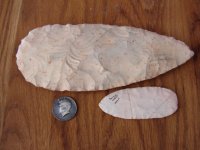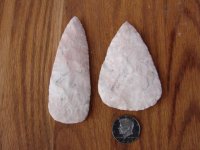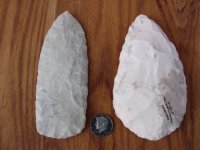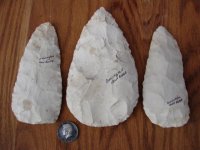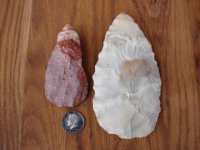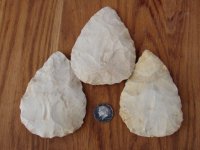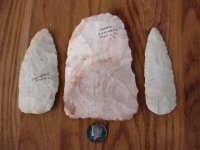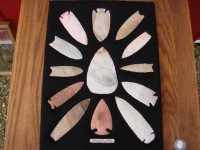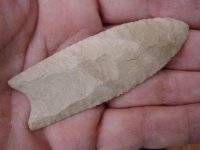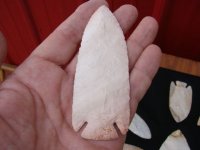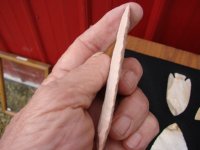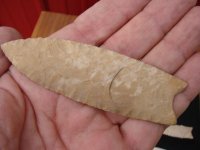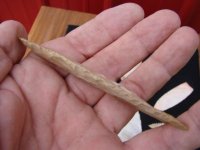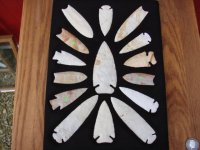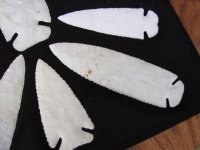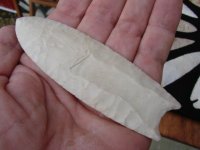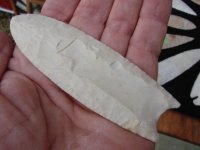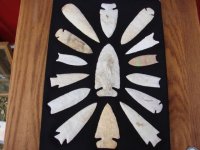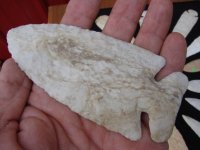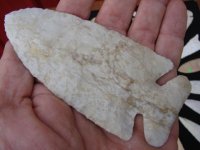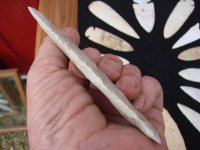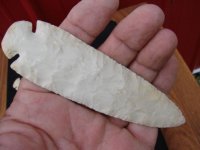I started knapping in '85 using glass and chips from Indian sites. I finally found some knappers and got some real flint to use. I discovered that it would be really expensive learning knapping from "store bought" rocks. I needed a flint source that was free. The closest to my house was the Burlington outcrops on the IL River 100 mi. west of me.
I found flint! The Burlington formation runs from SE Iowa, down the Miss. River and into IL, then turns west into MO and on into a portion of OK. Geologically, Burlington is from the Mississippian Formation. On the IL geological map it formed in the limestone layer labeled Mvl. Mississippian, Lower Valmayern. It is bedded as opposed to nodular. In other words, it's a big continuous sheet. In the IL River Valley, you can see the bands of white flint exposed in the limestone bluff faces.
I saved 2 nice nodules from past hunts and here they are. The first if from MO, somewhere between Springfield and Branson. My host for the MO hunt had me so lost I'm not sure exactly where this MO stuff came from. It came from a construction site and shows no staining from creek water.
You can see the nice large spall that was removed. This is a large clean piece and would make many points.
The second nodule came out of a creek in Pike Co. IL. Way better than most you find, this clean nodule would make a nice point or two. Heat treating would also turn the yellow stain red. The caramel color on the outside is normal for creek Burlington from IL.
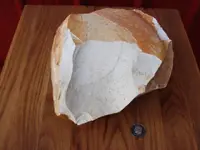
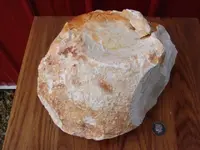
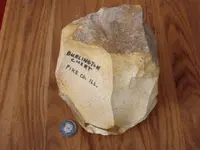
I found flint! The Burlington formation runs from SE Iowa, down the Miss. River and into IL, then turns west into MO and on into a portion of OK. Geologically, Burlington is from the Mississippian Formation. On the IL geological map it formed in the limestone layer labeled Mvl. Mississippian, Lower Valmayern. It is bedded as opposed to nodular. In other words, it's a big continuous sheet. In the IL River Valley, you can see the bands of white flint exposed in the limestone bluff faces.
I saved 2 nice nodules from past hunts and here they are. The first if from MO, somewhere between Springfield and Branson. My host for the MO hunt had me so lost I'm not sure exactly where this MO stuff came from. It came from a construction site and shows no staining from creek water.
You can see the nice large spall that was removed. This is a large clean piece and would make many points.
The second nodule came out of a creek in Pike Co. IL. Way better than most you find, this clean nodule would make a nice point or two. Heat treating would also turn the yellow stain red. The caramel color on the outside is normal for creek Burlington from IL.






